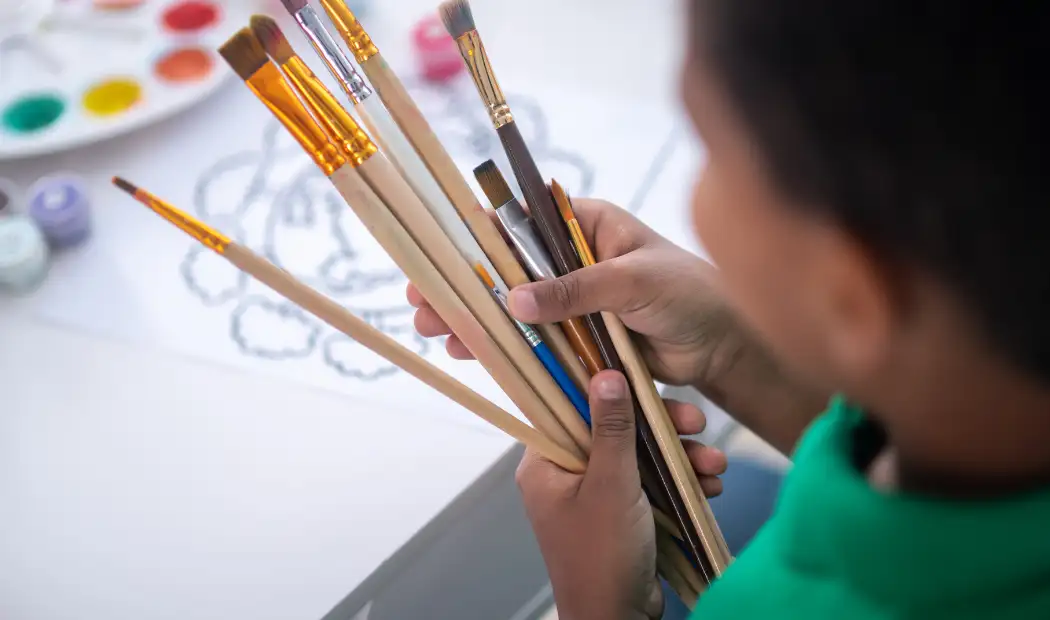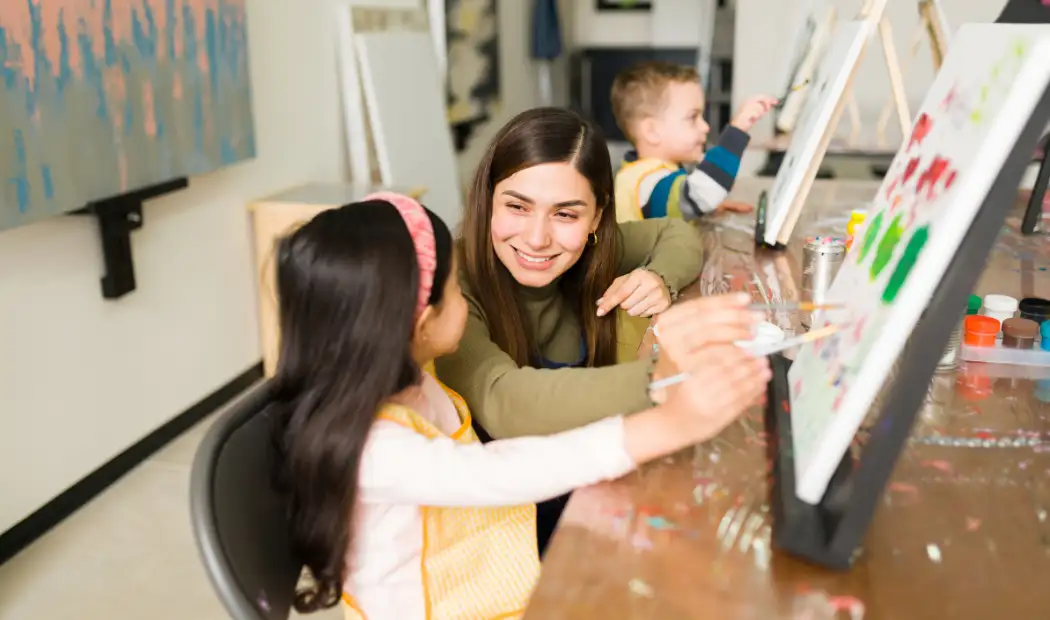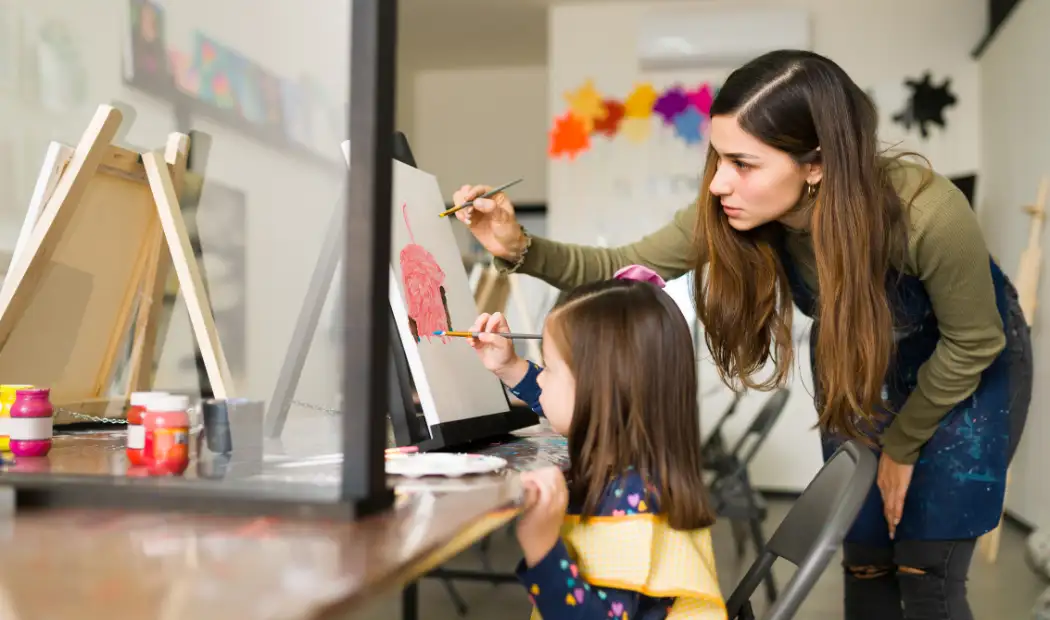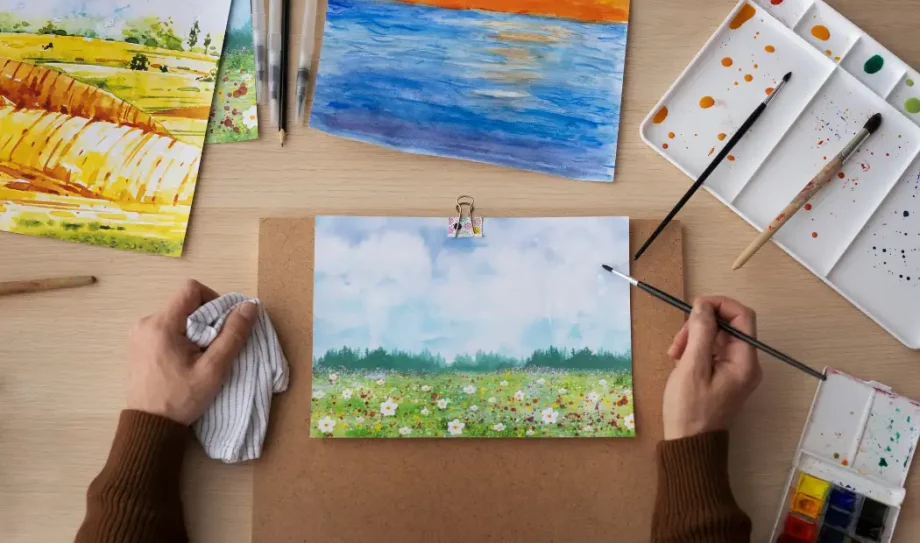Painting can be the silent poetry that will speak to everyone. What if it is integrated into the school curriculum? Painting in class can do wonders for students in class. Imagine classrooms filled with budding Picassos and Van Goghs, developing and growing with brushstrokes. It can be finger painting for the little ones and mastering of watercolors for the older students. There is a perfect project for someone. Of course there are hurdles everywhere but the joy and learning is immense. It’s so Worthy!!! So boys and girls, without further ado, let’s spill some paint!!!
Why is painting for school students important?
Students painting offers many benefits that are contributing to the holistic development of students. We will explore this with the following points:
- Cognitive development: School painting stimulates brain areas. It involves sharpening visual processing, memory and decision making.
- Emotional expression: Students are able to express their feelings through painting. It promotes their emotional well being. Thoughts are conveyed in a nonverbal way.
- Fine motor skills: They handle and understand the use of brushes and other painting tools. School paintings improve their motor skills and hand eye coordination.
- Creativity and imagination: Painting helps students think creatively. They use their imaginations. Student paintings improve their problem solving and innovative abilities.
- Social Skill: Classroom painting encourages teamwork, communication and the habit of sharing among students through collaborations.
Various ways of classroom painting in school
Schools will add painting to their curriculum in multiple ways to maximize student engagement and development. So what are they? Let’s see.
- Classroom activity: Teachers can arrange painting projects into regular classroom lessons. They can include thematic paintings related to subjects being taught in class.
- Art class: There can be dedicated art classes that provide structured time for students to learn various art student painting techniques and styles.
- After-school sessions: After school painting clubs or workshops can be arranged. It gives students additional opportunities to explore painting interests in a relaxed setting.
- Special event: You can organize painting competitions, exhibitions or art fairs. Paint for school motivates students to showcase their talents and appreciate their peers.
- Collaborative projects: There are collaborative canvases to paint for school. It brings a sense of community within the school.
Setting up the spaces for painting in class and common challenges
It is very important to provide a conducive environment for painting in the classroom. So now we will address thoughtful planning and the common challenges.
Setting up…
- Managing the space: You have to make sure that there is enough space for students to work comfortably without disturbing each other.
- Materials: There should be a variety of painting tools, like brushes, paint colors for classrooms, canvases and protective clothing.
- Storage: You should organize storage solutions for art supplies. It keeps the classroom tidy and accessible.
- Ventilation: There should be proper ventilation. It is necessary when students are using strong odors.
- Display area: There should be designated areas where students can display their artwork and take pride.
What are the challenges of painting in class?
- Mess management: Painting can be messy. There is a need for protective covers for tables and floors. You should have cleaning supplies handy.
- Shortage of supply: There should be regular inventory supplies to avoid running out of essential materials.
- Time constraints: It is important to allocate sufficient time for projects. It is the required time for setup and cleanup.
- Diverse skill levels: Projects should be tailored, and they should provide individual support as needed.
- Behavior management: Students should be given discipline and expectations. It is important to maintain order and focus.
- Teacher expertise: Not all the teachers feel confident in their ability to teach art. It is difficult for teachers without an art background.
- Student engagement: It is difficult to engage students. Students may not naturally gravitate towards art. It is challenging.
- Space limitations: Sometimes schools do not have dedicated art rooms. It is difficult to create that environment for painting.
- Curriculum pressure: There is a heavy focus on testing and core subjects. Finding time for art can be challenging.
- Budget constraints: Art supplies are expensive. Schools with limited budgets may struggle to provide materials.
Table of painting in class activities at school level
We will now see the painting ideas and materials required for all levels of education. This table will discuss it in depth.
| Level of education | Classroom painting idea | Material needed | Description |
| Kindergarten | Finger painting, shape stamping, sponge painting, color mixing, paint by numbers for kids and nature prints | Non toxic paint, large brushes, leaves, paper and sponges | It encourages exploration and develops motor skills. It uses simple exercises to focus on basic shapes and colors. |
| Primary school | Watercolor landscapes, storybook art, seasonal art, acrylic animal and self portraits and textured art | Watercolors, acrylic, brushes, texture tools and canvas | The student learns to create illustrations and paint simple landscapes. It focuses on background and self representation. |
| Junior high school | Portrait painting, cultural art, science and art, and abstract art | Oil paints, mixed media materials and large canvas | Students explore different styles and techniques. There is experimentation and the development of an artistic voice. |
| High school | Digital painting, portfolio development, concept art, social commentary and themed art | Digital tablets, advanced painting software, canvas and high quality paints | There is use of oil paint and mixed media. Students engage in sophisticated projects and portfolios. |
Summing Up!
Adding painting to school activities is a great way to improve student development. It fosters creativity and emotional expression. It also helps to improve fine motor skills and cognitive growth. There are endless benefits. You can incorporate various painting ideas and activities. This helps the school create a vibrant and engaging environment. This will nurture the talents of all students.
Looking for the best paint by number kits? Go for Art of Paint by Number?











